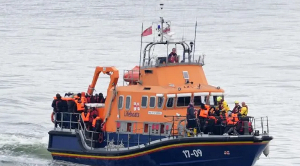- Home - News
- TWI News | TV
- Polls
- Year In Review
- News Archive
- Crime & Punishment
- Politics
- Regional
- Editorial
- Health
- Ghanaians Abroad
- Tabloid
- Africa
- Religion
- Election 2020
- Coronavirus
- News Videos | TV
- Photo Archives
- News Headlines
- Press Release
General News of Monday, 15 April 2013
Source: Daily Guide
GH¢32m SADA trees dead
Asongtaba Cottage Industries (ACI) and Savannah Accelerated Development Authority (SADA) Afforestation Project at the Vea Dam in Upper East is not doing well, a visit to the site has revealed.
Contrary to claims by officials within the ACI–SADA, the implementing agency of the GH¢32million (¢320billion) afforestation project, that the project was well on course, a visit to Asongtaba’s Vea site showed dead trees with goats having a field day on the site.
Asongtaba was the same company contracted by SADA for the controversial GH¢15million guinea fowl project which had nothing to show but a paltry 600 birds and 20 eggs.
The ACI was planting four different species of trees, being Mahogany, Teak, Dawadawa and Acacia, all of which the project management said were multi-purpose, shady and fast growing.
However, many community members who spoke to DAILY GUIDE thought the species of trees being planted by ACI could not reduce their poverty, as the SADA Chief Executive Officer, Alhaji Gilbert Iddi, had been saying.
They wished the project had planted more cash and fruit crops which could reduce their poverty situation.
The SADA chief executive said the project was not doing well because of bushfire.
However, none of the tree seedlings had been burnt by bush fires at the Vea Dam site, as speculated. Rather, many of the seedlings around the dam had either died off as a result of extreme dryness or been eaten by animals because of poor protection. The residents said they had not experienced bushfire in the area.
Out of the about 30 seedlings that were planted just around the Project Sign post towards the dam for example, less than 20 were standing and showing signs of growth.
There was another batch of seedlings, precisely Acacia species, opposite the Gowrie Senior High School entrance. This numbered to about 200 seedlings, but many had either broken off the ground due to lack of watering or been eaten by goats.
The Vea Dam area, according to the Regional Coordinator of the ACI–SADA, Raymond Agbontor, was among some 79 Afforestation sites in the Upper East Region.
So far only 31 workers had been retained at the Vea Project Site out of the 80 that did the initial tree planting.
They were to replace dead seedlings, water and protect the seedlings from being destroyed by grazing animals.
According Agbontor, a total of 81,000 teak trees, 40,000 acacia, 21,000 mahogany and 10,000 Dawadawa trees, had already been planted at various sections of the Vea Community and when DAILY GUIDE expressed shock at the number because the evidence did not support the claim, the Coordinator promised to organize a tour of all the sections of Vea Project for verification.
No Pay
Some community members and close relations of some of the 31 workers told DAILY GUIDE that the workers had not been paid for the past three months and this seemed to be affecting their commitment to work.
Strangely, the trees were planted during the dry season, exposing them to the vagaries of the weather.
The workers were supposed to water the seedlings daily and drive animals away, but community members insisted that they did not see that happening, as the workers did other menial jobs to keep body and soul together.
One of the workers who pleaded anonymity said there was no fuel to even move the tri-cycle motorbike to do the daily watering.
Efforts to get the Vea Afforestation site foreman, popularly known as Pajero, to confirm or deny the allegations proved futile.
However the Regional Coordinator of the ACI–SADA Afforestation project, Raymond Agbontor, confirmed that the workers had not been paid their GH¢100 monthly salary from January to March 2013 and that it was because some workers faced challenges in opening and maintaining bank accounts.
He however denied that the workers had not been given funds for petrol, explaining that it was the February 2013 funds that delayed, but that for March 2013 had been given to them. This claim by the Regional Coordinator was denied by the workers and it could be seen on the field that indeed the seedlings had not been watered for a long time.
An area that a worker pointed to as a nursery for the Vea Dam Project had dried leaves all over, as the seedlings had either been eaten by animals due to the absence of a fence around it, or fallen down with the plastic bags.
Project Coordinator as well as the Chief Executive Officer of SADA Alhaji Gilbert Iddi, reiterated that the Afforestation Project was meant to reduce poverty in the SADA areas and also create jobs; but the Vea community members thought this was far from possible, considering the species of trees being planted in the community.
Probe
The Ghana Integrity Initiative (GII), an anti corruption group, worried about the reckless dissipation of public funds by SADA, called for a probe into the activities of the projects. “The seeming and apparent failures of the SADA project are worrying as the SADA seems to be going in the same direction as similar projects that were initiated for the people of the North in the past,” GII said in a statement in Accra last week.
The anti graft body said there should be full scale investigations into the SADA scandal and commended Parliament’s decision to invite the Chief Executive of SADA.
“For some time now, the media has been debating some disturbing news about the guinea fowl project that is being sponsored by the Savannah Accelerated Development Authority (SADA). The media must be commended for its continued efforts to hold public officers accountable and to insist that public resources are utilised effectively and efficiently and for the common good of the citizens.
“The Chief Executive of the SADA, Alhaji Gilbert Seidu Iddi, in response, indicated that the Authority would hold a press conference to lay bare the facts on how an amount of GH¢15 million has been invested in the guinea fowl project as a part of the SADA project. “…Parliament has also indicated that they would bring the Chief Executive before the House to explain why the afforestation project embarked upon by the Authority was not progressing as expected.
“The results of this project, at least in the number of trees planted, are yet to be seen as only 300,000 trees out of a total of a planned five million trees, are alleged to have been planted so far in nine months. Parliament is obviously not satisfied with the progress of the project so far.
“The excuse that the trees were destroyed by bush fires is not convincing because bush fires are a normal feature in Northern Ghana and parts of the Brong Ahafo Region. This makes it imperative for SADA to have put in place measures to protect the young trees from these fires. It is constructive to note that the same company is behind these two projects (guinea fowl and afforestation),” the statement said.











